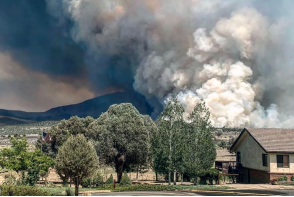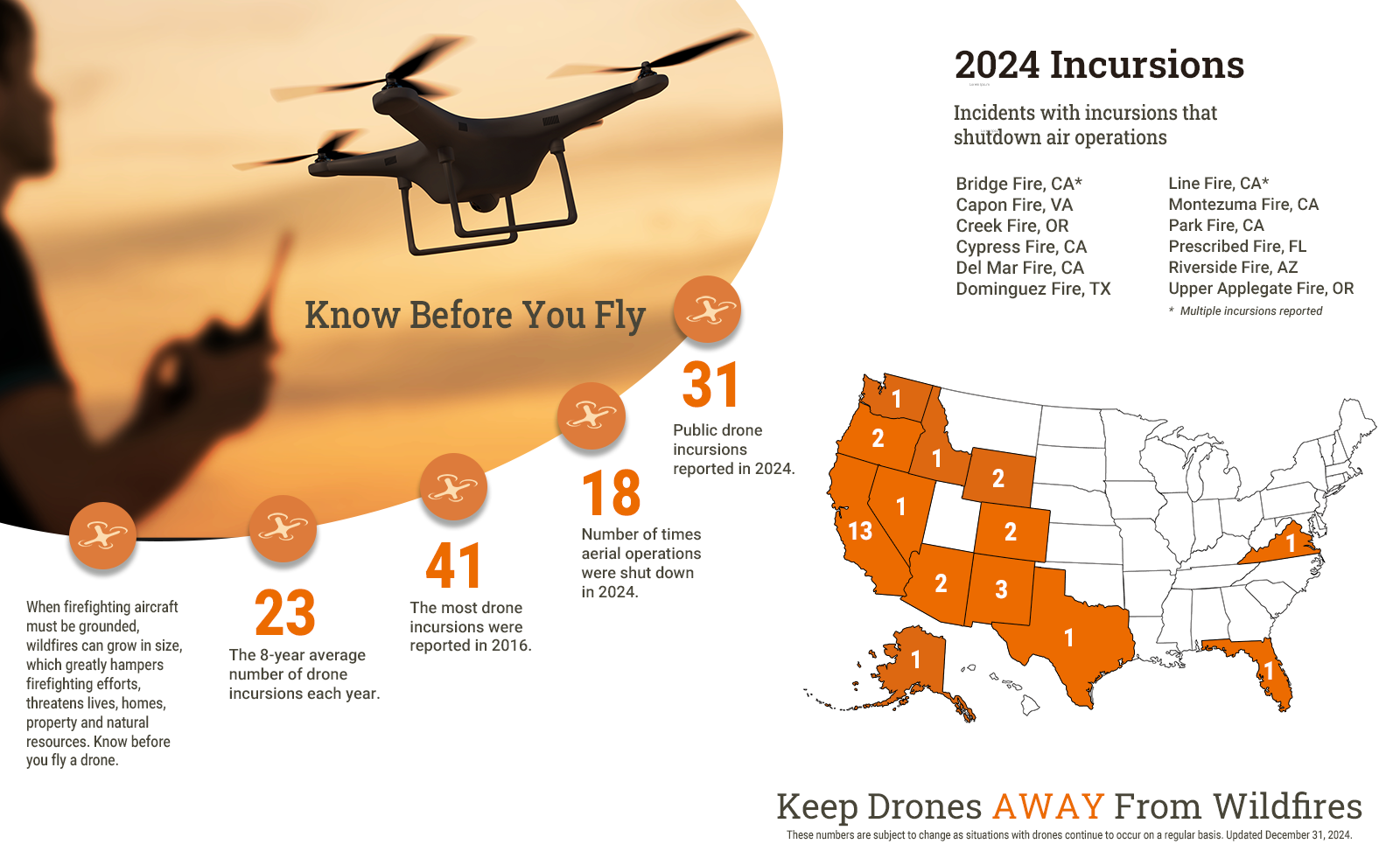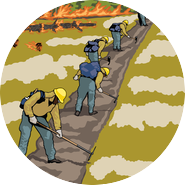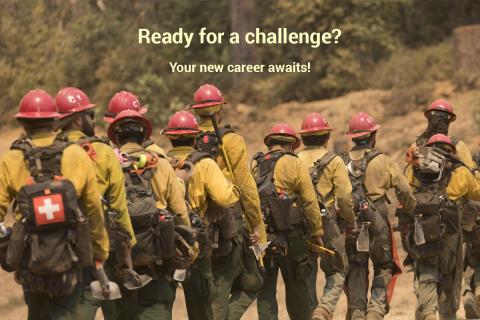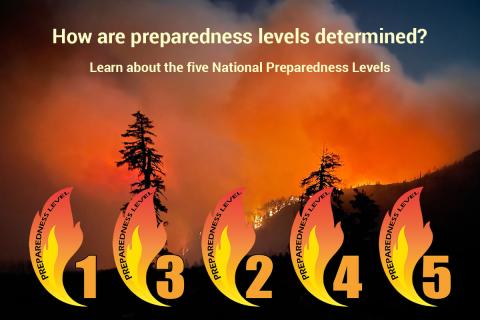National Fire News: The National Significant Wildland Fire Potential Outlook has been released for the next four months. Here's a look across the nation at where the potential for wildfire activity is identified to be above ... normal.
Fire activity increased across the U.S. during June, with the most notable increases in activity occurring in Alaska, the Great Basin, and Southwest Geographic Areas. Most other geographic areas observed a more modest increase in activity over the month, while the Southern and Eastern Areas observed a decrease in activity.
Activity increased more rapidly the latter half of the month in the West, with the National Preparedness Level increasing to three (on a scale of 1-5) June 21 due to large fires in several geographic areas.
Total acres burned through June is below the 10-year average at nearly 90%, with an above average tally of wildfires of 129%
🔥Find the full outlook here: https://www.nifc.gov/nicc-files/predictive/outlooks/monthly_seasonal_outlook.pdf

National Fire News: July 1, 2025. As we move into Independence Day week, it’s a time to celebrate safely and remember why it matters. Fireworks and wildlands don’t mix. A single firework landing in dry grass can spark a ... wildfire that spreads in seconds. Every year, we see preventable fires caused by fireworks, some threatening homes, wildlife habitat, and even firefighters themselves. Fireworks are never allowed on public lands, and we urge everyone to celebrate responsibly.
Wildfire activity remains high across the country, with 86 large fires actively burning and three new ones reported today. Of these, 68 are being managed under a strategy other than full suppression. While the total number of acres burned is just under 1.8 million, the number of fires we’ve seen this year is above average, underscoring the importance of early action, prevention, and public awareness.
Drone incursions continue to be a growing concern. So far this year, 23 unauthorized drones have entered wildfire airspace, more than double the number at this time last year. When drones are spotted, firefighting aircraft are grounded for safety, slowing suppression efforts. Before you launch, know before you fly. Recreational drones are never allowed near wildfires.
Two U.S. incident management teams and 91 overhead personnel are currently supporting Canadian wildfire operations. It’s a reminder that wildfire knows no borders and neither does our commitment to cooperation.
Today marks Day 2 of the Week of Remembrance. We honor Terry Sonner, who passed away in 2015, by focusing on recognizing sudden illness and preparing for emergencies on the fireline. Learn more about today’s focus and the firefighters we remember by following the National Wildfire Coordinating Group or find it here: https://www.nwcg.gov/6mfs/week-of-remembrance/2025-week-of-remembrance-day-2 .
🔥More NFN: https://www.nifc.gov/fire-information/nfn

National Fire News: June 30, 2025. A loss in the fire community impacts us all. Our hearts go out to the families and friends of the fallen firefighters in northern Idaho. A tragedy like this is unthinkable and they will never be ... forgotten.
Today marks the start of the Week of Remembrance, a time when the wildland fire community honors those who made the ultimate sacrifice. On this day in 2013, 19 Granite Mountain Hotshots lost their lives on the Yarnell Hill Fire in Arizona. As we begin this week of reflection, we invite you to honor the fallen by learning from the past and applying those lessons to keep our firelines safer today. Learn more about today’s focus and the firefighters we remember here: https://www.nwcg.gov/6mfs/week-of-remembrance/2025-week-of-remembrance-day-1
As we head into the 4th of July week, please help us prevent unwanted wildfires. Fireworks are never allowed on public lands, and even on private land, they can easily ignite dry grasses and vegetation. Sparklers alone burn at over 1,200 degrees, hot enough to cause third-degree burns and start fires. Celebrate safely by choosing alternatives like glow sticks or attending professional displays.
Across the country, 24 large wildfires are actively being suppressed, with another 61 fires, mostly in Alaska, being managed under strategies other than full suppression. A total of 5,134 wildland firefighters and support personnel are working hard to protect lives, property and natural resources.
While crews continue responding to wildfires here in the U.S., three incident management teams, five hotshot crews, and 70 overhead personnel are also helping out with large fires in Canada. It’s a reminder that fire, weather, and smoke don’t stop at borders, and that working together is the best way to face these challenges, no matter where they happen.
In southwest Utah, a new fuels and fire behavior advisory warns of very high fire danger. Fine fuels are extremely dry and continuous across the landscape, and recent lightning ignitions have shown rapid rates of spread. If you live, work, or recreate in the area, now is the time to stay alert and practice extra caution. Read the advisory for details https://www.nifc.gov/sites/default/files/NICC/2-Predictive%20Services/Fuels-Fire%20Danger/Fuels-Fire-Behavior-Advisory_Southwest-Utah_20250627.pdf.
🔥More NFN: https://www.nifc.gov/fire-information/nfn
Photo on the France Canyon Fire in Utah. Photo courtesy of InciWeb.

A loss in the fire community impacts us all. Our hearts go out to the families and friends of the fallen firefighters in northern Idaho. A tragedy like this is unthinkable and they will never be forgotten.
What’s the story behind July 2? National Wildland Firefighter Day is coming up, here’s how it began and why it matters!
July 2, 2025 will mark the fourth annual National Wildland Firefighter Day (NWFFD). Established in 2022, ... NWFFD is an opportunity to honor wildland firefighters and fire support personnel, whose contributions to public safety and the safeguarding of natural resources are often unseen by the public.
The original inspiration occurred on National Law Enforcement Appreciation Day in January of 2022, which got employees at NIFC thinking about whether a similar day could be established to celebrate the wildland fire community. A proposal was submitted to the administrators of the “National Day Calendar”, which accepted the proposal in March 2022.
➡Read the full story here: https://www.blm.gov/blog/2025-06-06/history-national-wildland-firefighter-day
#NationalWildlandFirefighterDay #NWFFD Continuing our countdown to National Wildland Firefighter Day on July 2, we can't miss the opportunity to showcase the support personnel behind the scenes.
From the front desk of a Forest Service office to the heart of wildland ... fire science, Becky Jenison’s fire career has been anything but ordinary. Starting at just 18, she was a "Stay in School" student in John Day, Oregon. A few years later, her path led to the Joint Fire Science Program at NIFC where she’s helped grow the program into a national hub for science-based fire management.
Today, Becky serves as Acting Program Manager for JFSP and steps up as a Supervisory Dispatcher during active fire incidents. Whether she’s helping award research grants or coordinating logistics during fire season, Becky’s leadership and dedication continue to shape the future of wildland fire.
Her motivation? "Seeing science used on the ground, that’s where the magic happens."
Read Becky's full story here: https://www.blm.gov/blog/2025-06-17/faces-wildland-fire-meet-tye-taber-and-becky-jenison

NPS Careers in Wildland Fire
With National Wildland Firefighter Day on the horizon (July 2), we’re spotlighting the dedicated individuals behind the mission. Meet Tye Taber, the air operations manager for Bureau of Land Management Fire's Great Basin ... Smokejumpers, located at NIFC.
Tye manages aircraft and contracts for smokejumper and paracargo missions, trains spotters, and continues to jump fires himself. With more than a decade in wildland fire, from trail crew to helitack to jumping in West Yellowstone, Tye eventually joined the Great Basin Smokejumpers in 2016 and hasn’t looked back.
He credits the team’s long-term retention to a culture built on strong leadership and high performance. “It’s all people who are good at making decisions, leading, being proactive,” he says. “And it’s the best job out there. That’s why I’m still here.”
🪂Read more: https://www.blm.gov/blog/2025-06-17/faces-wildland-fire-meet-tye-taber-and-becky-jenison
